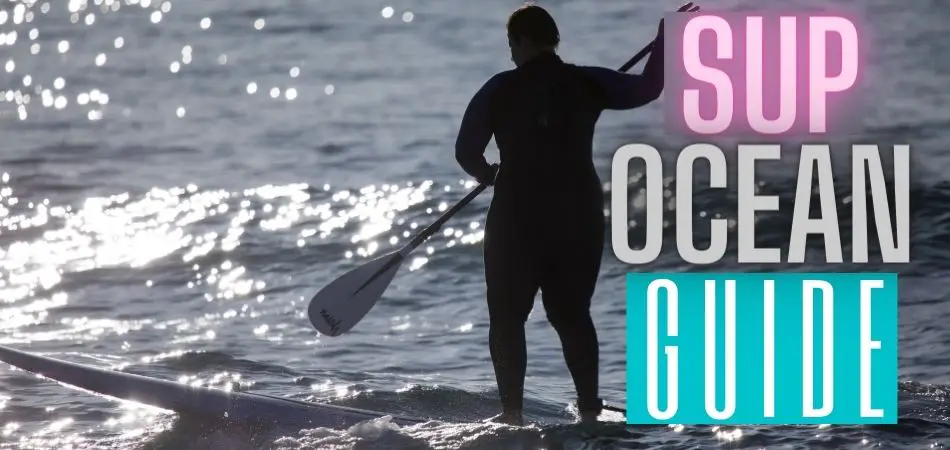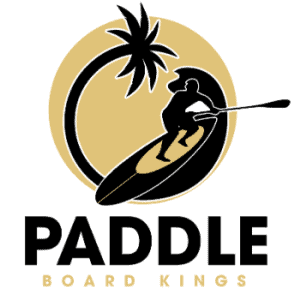Paddle boarding is a fun and accessible way to enjoy the ocean. You can head out for some fresh air, get in shape, or just have some good old-fashioned fun.
The only problem with paddle boarding is that it’s not always easy to know what you should be paying attention to while you’re out there on the water. We’ve compiled this guide of tips and tricks so that you can make your next excursion go smoothly.
How To SUP In The Ocean: A Guide to Safely Enjoying this Water Sport

1. Get the right gear
This means getting the right board and paddle for the ocean as well as a life jacket. If you’re renting a board, make sure that the rental place offers life jackets. Paddle boarding in the ocean does involve more risk of falling in the water than on any other water surface.
When choosing a paddle for this activity, make sure it is long enough so that you can reach from tip to the other without feeling like you have to lean too far forward or backward. The most important thing about finding an optimal paddle is making sure it’s not heavy. If it’s too heavy, then your hands will get tired quickly.
It is advisable to use an epoxy paddle board in the ocean because of its rigidity which will help you stay on top of the water.
When choosing a life jacket, make sure that it has reflective material on the back of it and around the chest area so that you are visible to ships and other water vessels.
2. Pick an ideal spot for a paddle board adventure
Paddle boarding is not recommended in areas with strong currents or undertows because they can be dangerous even for experienced paddlers. You should only practice paddle boarding in calmer waters without much boat traffic where there isn’t any risk of being hit by another vessel such as kayaks or surfboards.
3. Be sure to check the currents and tides
Ask at local surf shops, look online for charts and tables, or find a local paddle boarder who you can trust to give advice. You should also ask your rental place about how tides will impact the area you plan on going out in and whether or not they recommend doing it at high or low tide.
You want to avoid strong currents and if you cannot get advice from locals, then make sure that you don’t paddle out too far. It is better to stay closer in and be more comfortable than going further out where problems may arise. If you are a beginner, it is always advisable to avoid most currents.
Note also that low tides can produce bigger waves. Therefore, you may have more difficulty if the tide is low. You should also take note of whether or not the wind direction will change while you’re paddling as this could lead to a headwind which can slow your progress considerably until it’s over with.
4. Know what times of day and time of year work best for water activities
Paddle boarding is more enjoyable when there aren’t many waves, so try to go during off-peak hours such as early mornings before rush hour traffic picks up, on weekdays after the weekend crowds have left, and morning/evening hours instead of midday.
The same goes with weather conditions: mid-day heatwaves make paddling much less pleasurable than mild temperatures in cool breezes, which offer an invigorating experience.
5. Choose the best entry point
You will need to do some scanning to get the best point to enter the ocean. You want to avoid crowded areas, so you don’t get knocked off by swimmers or surfers. This way, you also won’t knock off other people. Try to stay away from areas with rock jetties or other obstacles in the water.
Don’t start near rocks, boats, or piers. In case you fall off while getting on your board, you do not want to fall onto these objects. Also, you don’t want your board crashing into them.
If you’re a beginner, your best bet is to start on flat water (such as lakes) before moving onto more challenging bodies of water such as rivers and oceans.
This is because most people don’t know how they will respond when faced with waves crashing against them, which can lead some newcomers into feeling very afraid because it’s much different from what they were expecting.
6. Know the basics of paddle boarding
Before deciding to paddle board in the ocean, your paddleboarding skills should be quite good. You should know how to stand on your board without falling off or tipping over, and you need to be able to turn the board from side to side easily without difficulty since it takes time to get used to.
You should also have some experience with paddle boarding in calmer waters, as mentioned before, so that you have a better idea of how to paddle board in the ocean.
7. Do not forget your leash
The leash is an important safety tool that you should not forget to bring with you. It will also prevent your board from floating away in high currents in case you fall off the board. It also helps you get back on your board should you fall off.
Make sure that the leash is not too short and doesn’t have any knots in it, as this will make it harder for you to use while out on the water. It’s a good idea to tie some kind of bright color like yellow or orange onto your leash since this makes it easier to see on the water.
8. Know your limits
You don’t want to push yourself too much, or you will find yourself in danger. You should avoid going out too far or paddling when it’s very windy unless the conditions are right for it.
Be careful about where you go and what time of year you choose to paddle board since this can affect how strong waves are at a particular location. Always keep an eye on your surroundings and always keep an eye out for traffic.
Don’t go too far from shore unless you are very sure of what you’re doing. It’s better to turn back when things get challenging than in danger because conditions changed suddenly or the currents became stronger/weaker than expected.
Is It Hard To Paddle Board In The Ocean?
It can be very difficult to paddle board on the ocean, especially if you are a beginner. It’s best to start on flat water before moving onto the ocean. The tides and currents in the ocean make it harder to paddle board in the ocean compared to flat water.
In addition, you need to be careful not to get knocked off by other people while on your board or crashing onto rocks/jetties if there are any nearby. You also need a lot of endurance since it takes a long time before you can progress against waves and currents.
If you have experience with rivers and lakes, then it shouldn’t be too difficult for you to paddle board in calmer waters but still do follow all safety precautions since there are many dangers associated with this activity, such as currents and obstacles which can cause injury.
Entry Point/Safety of the Ocean
As I mentioned earlier, you want to choose a safe entry point. This should be far away from rocks, boats, and piers. You also want to avoid crowded areas, so you don’t get knocked off your board by swimmers or surfers.
The entry point should also be near a location where you can swim, such as the shoreline or shallow areas of water, so that if you fall off your board, then it’s not too far for you to go before reaching land.
This is important, especially since currents in oceans are strong, and going out into them from further away than expected will put you at risk of drowning.
Weather, Tides, and Currents
I mentioned earlier why it is important to look out for these three when considering paddle boarding in the ocean. If you are a beginner, then avoid the activity when there are currents in the ocean. Even if you have some experience, it is still advisable to avoid strong currents.
Low tides often cause big waves. So again, you might want to consider this and avoid low tides. Also, you don’t want to go into the ocean in bad weather since high waves can cause you to lose your balance and fall off.
The Best Type of Paddle boards for the Ocean
Epoxy paddle boards are among the best boards for the ocean since they are very strong and last longer than other paddle boards. They are rigid, and this helps in getting past the breaks. They can withstand most conditions in the ocean.
PVC paddle boards are also good for the ocean. They can withstand waves and currents while still being cheap to buy. The only downside is that they aren’t very durable, which means you will have to replace them more often than epoxy boards.
Final Thoughts
Paddle boarding in the ocean requires some experience. It’s best to start off on flat water and then move onto the ocean once you have some experience under your belt. Hopefully, the tips and tricks in this guide will help you have a positive experience.
